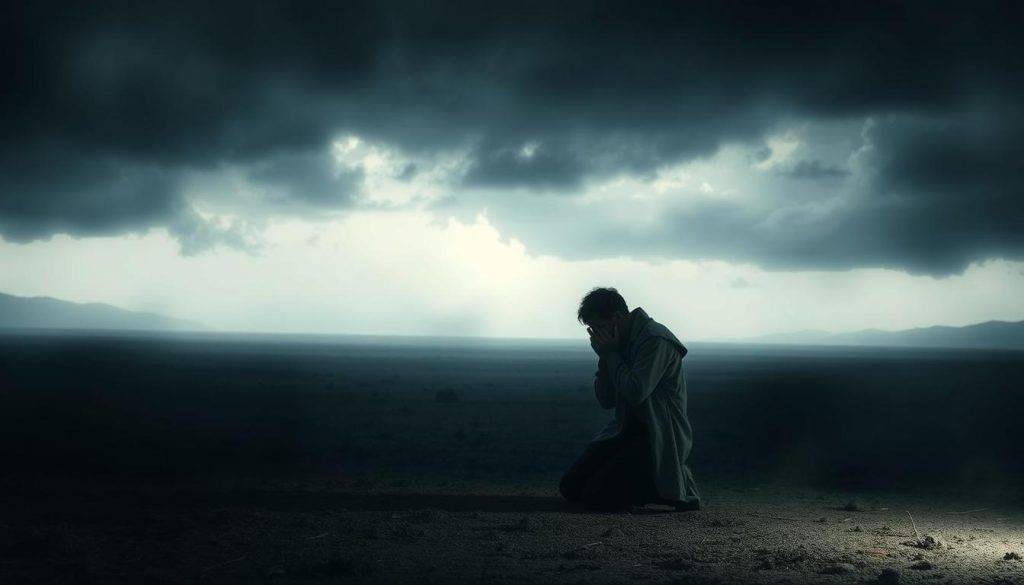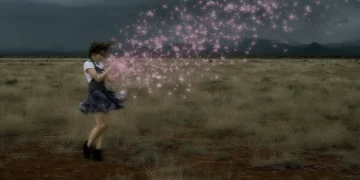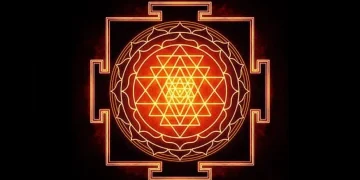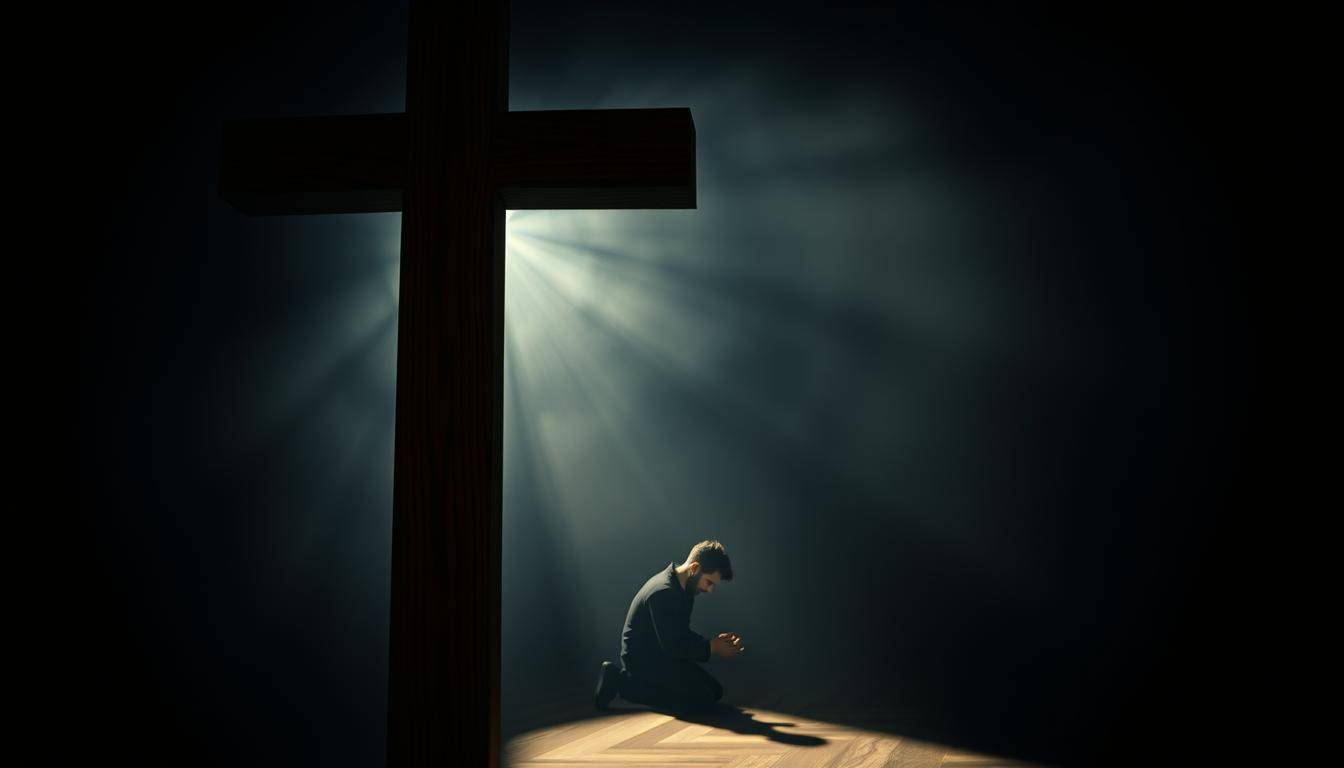“In the twilight of despair, the soul discovers its strength—not by fleeing the shadows, but by walking through them.” These words, inspired by 16th-century mystic St. John of the Cross, capture the essence of a transformative journey many face during periods of profound inner struggle.
Originally described in an eight-stanza poem, this concept represents a phase where individuals confront intense emotional and spiritual emptiness. While rooted in medieval mysticism, its relevance has expanded—modern psychology now recognizes it as a catalyst for personal reinvention. St. John’s work illustrates how temporary detachment from familiar comforts can lead to unexpected clarity.
Today, this experience often manifests as a crisis of identity or purpose. What begins as disorientation can evolve into self-discovery when approached with courage. The process mirrors psychological principles about resilience, blending ancient wisdom with contemporary understanding of human growth.
Though challenging, this journey holds remarkable potential. By embracing uncertainty, people often uncover deeper meaning and emotional fortitude. As you’ll discover, historical teachings and modern insights agree: even the most disorienting trials can illuminate paths to renewal.
Key Takeaways
- Originates from St. John of the Cross’s poetic exploration of spiritual purification
- Combines medieval mysticism with modern psychological concepts
- Represents a temporary crisis leading to lasting personal transformation
- Applies to both faith-based struggles and secular identity challenges
- Emphasizes growth through embracing discomfort rather than resisting it
Exploring the Origins and Meaning
In 1578, a Spanish friar imprisoned for religious reform penned groundbreaking spiritual works. St. John of the Cross—poet and mystic—used confinement to explore profound questions about human suffering and divine connection. His writings, including Dark Night and Ascent of Mount Carmel, framed spiritual growth as a journey through metaphorical darkness toward enlightenment.

St. John of the Cross and the Mystical Journey
Born in 1542, St. John joined the Carmelite Order seeking deeper spiritual truth. His poetry describes two purification phases: active (conscious effort to detach from worldly desires) and passive (divine intervention stripping ego). He compares this process to climbing a mountain—each step requires releasing attachments.
Religious and Philosophical Perspectives
St. John’s work bridges apophatic mysticism (knowing God through absence) and cataphatic traditions (understanding through divine presence). This paradox appears in his lines: “To reach satisfaction in all, desire its possession in nothing.” Philosophers later reinterpreted his ideas through secular lenses, viewing “nights” as universal crises of meaning.
| Tradition | Approach | Key Symbol |
|---|---|---|
| Apophatic | Divine absence as purification | Empty night |
| Cataphatic | Divine presence in creation | Guiding flame |
| Modern | Existential self-discovery | Inner compass |
Sixteenth-century readers saw St. John’s poems as maps for spiritual survival. Today, psychologists recognize parallels between his “nights” and identity-shaping challenges. Both frameworks suggest periods of confusion often precede breakthroughs in understanding life’s purpose.
Historical and Spiritual Context
Long before modern psychology framed inner struggles, medieval thinkers mapped spiritual journeys through poetic metaphor. Fourteenth-century texts like The Cloud of Unknowing laid groundwork for understanding transformative crises—describing faith as a “ladder of love” requiring surrender to mystery.

Evolution from Medieval Mysticism to Modern Usage
Early Christian mystics viewed spiritual purification as divine surgery—removing ego to make space for wisdom. Their writings blended symbolic language with practical guidance. By the 16th century, St. John of the Cross expanded these ideas in The Ascent of Mount Carmel, framing detachment as a path to clarity.
| Period | Focus | Key Text |
|---|---|---|
| 14th Century | Contemplative surrender | The Cloud of Unknowing |
| 16th Century | Active purification | Ascent of Mount Carmel |
| 21st Century | Psychological integration | Secular mindfulness guides |
Interpreting the Poetic Roots and Treatises
Medieval authors used poetry to express what logic couldn’t capture. “Heavenly secrets lie wrapped in shadow,” wrote one anonymous mystic, emphasizing experiential learning over doctrine. This approach allowed later generations to reinterpret texts through changing cultural lenses—transforming monastic practices into universal tools for self-discovery.
Historical context shaped how these experiences were described. War-torn eras framed purification as endurance training, while peaceful periods saw it as creative rebirth. Today, the same principles help people navigate career shifts or identity questions—proving ancient wisdom adapts across centuries.
Embracing the Dark Night of the Soul
Mother Teresa described her decades of spiritual emptiness as “a sharing in Christ’s passion”—a perspective that reframes personal anguish as sacred ground for growth. This approach mirrors St. John of the Cross’s teachings, where periods of intense inner struggle become gateways to profound renewal.

Understanding Crisis as a Path to Transformation
Historical mystics viewed these trials as necessary purgation—like a caterpillar dissolving in its chrysalis before emerging transformed. St. John’s writings compare this process to spiritual alchemy, where perceived abandonment becomes the furnace for forging deeper connection. His poem The Dark Night illustrates how releasing old identities creates space for rebirth.
Modern accounts echo this wisdom. A corporate executive who survived burnout shares: “Losing my career identity felt like death—until it freed me to build a life aligned with purpose.” These stories reveal a universal truth: what initially appears as collapse often lays the foundation for truer selfhood.
Three principles emerge from this paradox:
- Surrender opens doors that force cannot
- Emptiness prepares the soul for new meaning
- Painful endings birth unexpected beginnings
Rather than resisting life’s difficult chapters, embracing them as sacred rites of passage can transform suffering into wisdom. As 14th-century mystic Julian of Norwich observed: “First there is the falling, then the recovery—both are the mercy of God.” This perspective turns crises into compasses, guiding seekers toward their deepest truths.
Recognizing Signs and Symptoms of Spiritual Desolation
A profound shift occurs when existential questions collide with daily life. What initially feels like emotional turbulence often carries deeper spiritual significance. Understanding these signals helps distinguish transformative growth from temporary distress.

Emotional, Mental, and Physical Indicators
Common emotional markers include persistent emptiness despite external success—like a CEO who suddenly questions their life’s direction after achieving career goals. Mental signs often involve losing connection to personal values: “I stopped recognizing myself in the mirror,” shares one therapy client describing their journey.
Physical manifestations might include:
- Chronic fatigue unrelated to medical causes
- Changes in sleep patterns or appetite
- Unexplained heaviness in the chest or limbs
| Spiritual Desolation | Clinical Depression |
|---|---|
| Purpose-driven questioning | Persistent hopelessness |
| Intermittent clarity moments | Constant emotional numbness |
| Physical symptoms ease with insight | Requires medical intervention |
Unlike chronic depression, these experiences often contain flashes of meaning. A teacher described her dark night phase: “The pain felt purposeful—like my spirit was remodeling its home.” This distinction matters because mislabeling growth as pathology can delay transformation.
Recognizing these patterns allows individuals to navigate challenges with informed grace. What seems like collapse might actually be the soul’s way of making space for rebirth.
Modern Perspectives and Psychological Implications
Contemporary research bridges ancient spiritual concepts with mental health science. Psychologists now recognize periods of existential questioning as potential catalysts for growth rather than disorders. This shift reframes what St. John of the Cross called the “dark night” as a natural phase in human development.

Crisis of Faith Versus Clinical Depression
Spiritual crises often mirror depressive symptoms but differ in key ways. A 2022 Johns Hopkins study found that 68% of participants experiencing existential distress reported moments of clarity absent in chronic depression. Spiritual teacher Eckhart Tolle describes this distinction: “The pain of awakening feels like dying—but to what no longer serves you.”
| Spiritual Crisis | Clinical Depression |
|---|---|
| Intermittent hope | Persistent despair |
| Purpose-driven angst | Emotional numbness |
| Energy returns with insight | Chronic fatigue |
The Role of Self-Reflection in Healing
Mindfulness practices help individuals navigate these turbulent phases. Neuroscience reveals that meditation increases gray matter in brain regions linked to self-awareness. A therapist shares: “Clients who journal during crises often uncover patterns pointing toward renewal.”
Three transformative strategies emerge:
- Daily contemplative walks to process emotions
- Gratitude practices to anchor in the present
- Creative expression as a mirror for inner shifts
Modern psychology validates what mystics taught centuries ago: Conscious engagement with life’s difficult chapters builds resilience. As researcher Dr. Lisa Miller notes, “Spiritual awakening and psychological health aren’t opposites—they’re different facets of human wholeness.”
Practical Approaches to Navigating Spiritual Crisis
When facing existential crossroads, practical tools become lifelines for transformation. Historical figures and modern seekers alike demonstrate how intentional practices can turn turmoil into breakthroughs. These methods bridge ancient wisdom with contemporary needs, offering structure amid uncertainty.

Actionable Insights from Personal and Collective Experience
Nelson Mandela transformed 27 years of imprisonment into leadership preparation through daily reflection. Maya Angelou channeled childhood trauma into groundbreaking literature, proving creative expression heals wounds. Their journeys reveal three keys:
- Structured routines create stability during upheaval
- Purposeful reflection uncovers hidden lessons
- Community connection prevents isolation
Techniques for Meditation, Reflection, and Growth
Practices like morning pages journaling help process emotions through unfiltered writing. Contemplative walks in nature align with St. John Cross’s emphasis on simplicity. Group meditation circles provide collective energy for individual healing.
| Technique | Purpose | Example |
|---|---|---|
| Guided visualization | Access inner wisdom | Imagining future self-dialogue |
| Gratitude mapping | Anchor in positivity | Daily 3-item lists |
| Art therapy | Express the inexpressible | Mandala drawing sessions |
Experiment with methods until finding resonance. As Angelou advised: “Listen to yourself carefully—your spirit knows what it needs to grow.” Pair personal practice with community support for sustained progress through challenging phases.
Lessons from Notable Figures and Spiritual Leaders

Thirteenth-century poet Rumi turned devastating personal loss into timeless wisdom, writing: “The wound is where light enters you.” His journey—from grief-stricken scholar to enlightened mystic—exemplifies how spiritual crises birth profound creativity. Across eras, individuals have harnessed life’s bleakest chapters to fuel extraordinary contributions.
Historical Examples of Transformation
Sixteenth-century nun Teresa of Ávila channeled years of illness and doubt into groundbreaking mystical literature. Her book The Interior Castle emerged from intense spiritual desolation, mapping stages of divine connection. Similarly, Beethoven composed his Ninth Symphony while grappling with deafness—proof that physical and emotional trials can ignite genius.
| Era | Figure | Challenge | Outcome |
|---|---|---|---|
| 13th Century | Rumi | Loss of mentor | 30,000+ spiritual poems |
| 16th Century | Teresa of Ávila | Chronic illness | Foundational mystical texts |
| 19th Century | Beethoven | Progressive deafness | Symphony No. 9 |
Contemporary Insights and Inspirational Journeys
Modern leaders continue this pattern. Nelson Mandela’s 27-year imprisonment became preparation for unifying a nation. Author J.K. Rowling transformed welfare struggles into the Harry Potter universe, later reflecting: “Rock bottom became solid ground for rebuilding.”
These stories share three truths:
- Crisis dismantles outdated self-perceptions
- Creative expression channels pain into purpose
- Community impact often follows personal transformation
Whether through art, leadership, or service, history’s luminaries prove what Rumi understood: The most crushing pressures create diamonds of wisdom.
Conclusion
Human history reveals a pattern: Our greatest growth emerges from life’s most challenging phases. St. John of the Cross’s dark night of the soul concept—rooted in 16th-century mysticism—continues guiding modern seekers through spiritual deserts toward renewal.
Though this experience brings pain, it carries transformative power. Psychological research now confirms what mystics taught: Crisis reshapes identity, clearing space for wiser living. Temporary emptiness becomes fertile ground for rebuilding purpose.
Three truths endure across eras: Self-reflection uncovers hidden strength, meditation anchors turbulent emotions, and community support lights the path forward. These tools turn struggle into sacred fuel—proof that even the longest nights birth dawns.
Your journey through darkness need not be solitary or hopeless. Like countless before you, embrace this phase as the wisdom-gathering chapter of your story. New clarity awaits those who walk courageously through shadow—one step, one breath, one breakthrough at a time.
FAQ
How does St. John of the Cross define spiritual transformation?
The 16th-century mystic framed profound spiritual growth as a journey through purification – releasing attachments to surface-level comforts to discover deeper connection. His writings emphasize how temporary emptiness creates space for lasting fulfillment.
Can emotional numbness indicate a meaningful inner shift?
While prolonged apathy warrants professional support, temporary detachment often signals recalibration. Many report feeling “lost” before gaining clarity – like winter preparing soil for spring growth. Tracking patterns with journaling helps distinguish stagnation from transition.
What differentiates existential crisis from mental health conditions?
Clinical depression often involves biochemical factors requiring medical care, whereas spiritual desolation centers on meaning-seeking. However, they can overlap. Experts recommend addressing both physiological needs and philosophical exploration through integrated approaches.
Which practices help navigate periods of inner turbulence?
Contemplative rituals like breath-focused meditation, nature immersion, and creative expression anchor awareness. Studies show structured reflection – such as daily gratitude lists – rebuilds neural pathways toward resilience during transformative phases.
Why do historical figures like Rumi reference "the night"?
Cross-cultural wisdom traditions use darkness as metaphor for unknowing – the fertile void where ego dissolves and new understanding emerges. Modern psychology echoes this, recognizing that discomfort often precedes breakthroughs in self-awareness.
How long do these transitional phases typically last?
Duration varies individually. Some experience intense weeks, others gradual years. Progress isn’t linear – cyclical patterns are normal. Tracking small milestones (improved sleep, renewed interests) helps maintain perspective during extended journeys.




























































